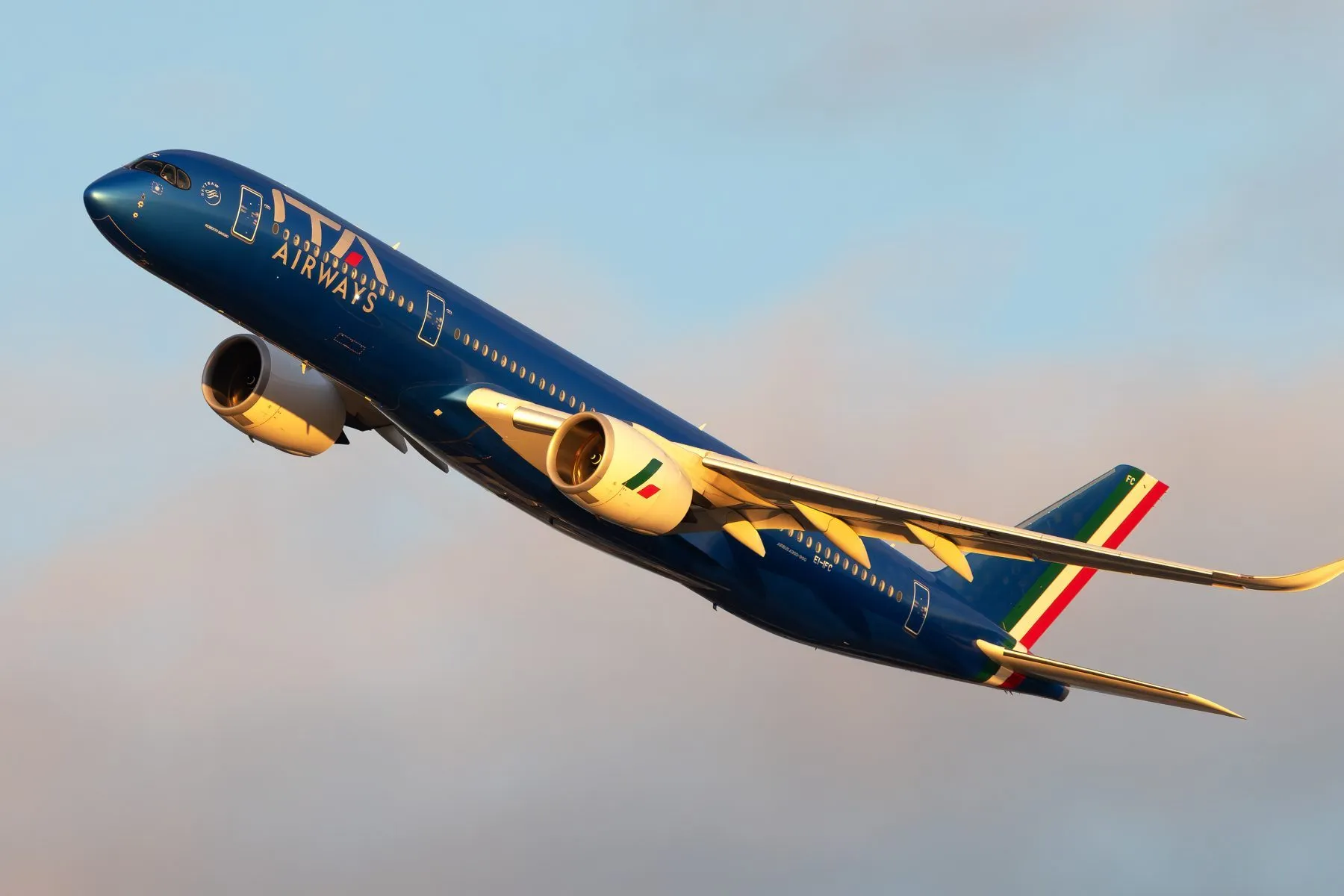Lufthansa-ITA Merger Milestones: What’s Changing and When?

Skift Take
Lufthansa isn’t wasting any time in bringing its latest acquisition into the fold.
On Monday, ITA Airways’ senior management team was joined in Rome by Carsten Spohr, Lufthansa Group CEO. The high-profile meeting marked the start of the practical integration between the German aviation conglomerate and Italy’s national airline.
Last month, Lufthansa Group and the Italian Ministry of Economy and Finance (MEF) formally concluded the merger transaction. The deal saw Lufthansa acquire a 41% stake in ITA, with the Italian government retaining 59%. Notably, the contact allows Lufthansa to increase its shareholding at a later stage – something it is widely expected to do.
Founded in November 2020, ITA is the successor brand to Alitalia, Italy’s former flag carrier.
With competition watchdogs won over and financials finally settled, the hard part begins – integrating ITA into the sprawling Lufthansa Group.
After Monday’s briefing, we now have a valuable insight into how the consolidation process will pan out. From loyalty programs to terminal transfers, here are the key dates to watch over the coming months:
February 3: Earning and Burning
Described as the “first concrete step” in the merger from a passenger perspective, members of Lufthansa Group’s Miles & More loyalty program can now earn and burn miles on all ITA Airways flights.
The move opens up redemption opportunities for the scheme’s 36 million members. Starting today, customers using ITA’s frequent flyer program Volare, can also earn and redeem points on flights operated by Lufthansa, Swiss, Austrian Airlines, and Brussels Airlines.
February 25: Combined Bookings
Airlines around the world use codesharing to allow passengers to book flights across multiple operators on a single ticket. From February 25, ITA and Lufthansa Group combined itineraries will be available to book through all global sales channels.
An initial selection of around 100 flight connections will be possible, rising to more than 250 once the project is complete. As well as key international routes, all ITA domestic services to Sicily, Puglia, Calabria, and Sardinia will eventually carry Lufthansa Group codes.
March 30: Terminal Transitions
The fairly modest developments in January and February set the scene for a Big Bang moment at the end of next month. On March 30, huge operational and commercial changes will take place.
Coinciding with the start of the summer flight schedule, ITA will move into Lufthansa terminals at the Group’s German hubs. In Frankfurt, ITA will operate from Terminal 1, while in Munich it will fly from Terminal 2. The company says it will “significantly reduce passenger transfer times” at these critical airports where connections between flights can be as little as 40 minutes.
Logistically, things are more straightforward on the Italian side. Lufthansa Group airlines already operate from the same terminal as ITA at Rome Fiumicino and Milan Linate Airports.
March 30: Lounge Access
Second only to the aircraft itself, airport lounges are important passenger experience assets. For premium-heavy flag carriers such as Lufthansa and ITA, they can help define an airline’s value proposition and enhance the customer journey.
From March 30, eligible ITA passengers can use 130 global lounges from Lufthansa Group and its partners. Those traveling with Lufthansa Group will also be able to visit ITA’s smaller network of lounges.
March 30: Enhanced Connections
Lufthansa Group is best known for its large German hubs in Frankfurt and Munich, however, it also has three other vitally important airports in its network. Brussels, Vienna, and Zurich are also Group hubs and collectively channel tens of thousands of passengers each day on connecting flights.
To better leverage the new transit opportunities, flight schedules between the five Group hubs and ITA’s main airports in Rome and Milan will be optimized. From March 30, the aim is to better distribute departures and arrivals throughout the day to offer a more competitive schedule for lucrative long-haul services.
Early 2026: Alliance Accession
Given Lufthansa Group is a founding member of the Star Alliance, it was only a matter of time before ITA switched its allegiance. Both sides confirmed that preparations have started, but the official transfer from SkyTeam to the Star Alliance isn’t due to be completely finished until the first half of next year.
On Monday, Lufthansa confirmed that ITA has “already initiated [its] withdrawal,” however the unraveling and migration process can be complex, resulting in an extended timeline. For its part, ITA confirmed that its “exit phase” from SkyTeam will end on April 30, 2025, and it will begin the process of joining Star in the coming weeks.
While losing a member is never good news, the defection of SAS Scandinavian Airlines from Star to SkyTeam last year will likely soften the blow.
What are the CEOs Saying?
Speaking on Monday, Spohr struck a bullish tone on the integration of ITA into the Lufthansa Group: “Now that ITA Airways has become a member of our airline family, we want to push ahead with the merger quickly, so that ITA and its passengers, as well as the guests of our other passenger airlines, can quickly benefit from the advantages of an expanded Lufthansa Group.”
Meanwhile, Joerg Eberhart, CEO of ITA Airways described Monday’s timeline as “just the beginning.”
“We will continue to work to seize further growth opportunities and offer our customers new benefits in the coming weeks,” he said.
Spohr added that he is confident that ITA will “realize a profit as early as this year.”
Lufthansa Group is due to publish its full-year results on March 6.
Airlines Sector Stock Index Performance Year-to-Date
What am I looking at? The performance of airline sector stocks within the ST200. The index includes companies publicly traded across global markets including network carriers, low-cost carriers, and other related companies.
The Skift Travel 200 (ST200) combines the financial performance of nearly 200 travel companies worth more than a trillion dollars into a single number. See more airlines sector financial performance.





